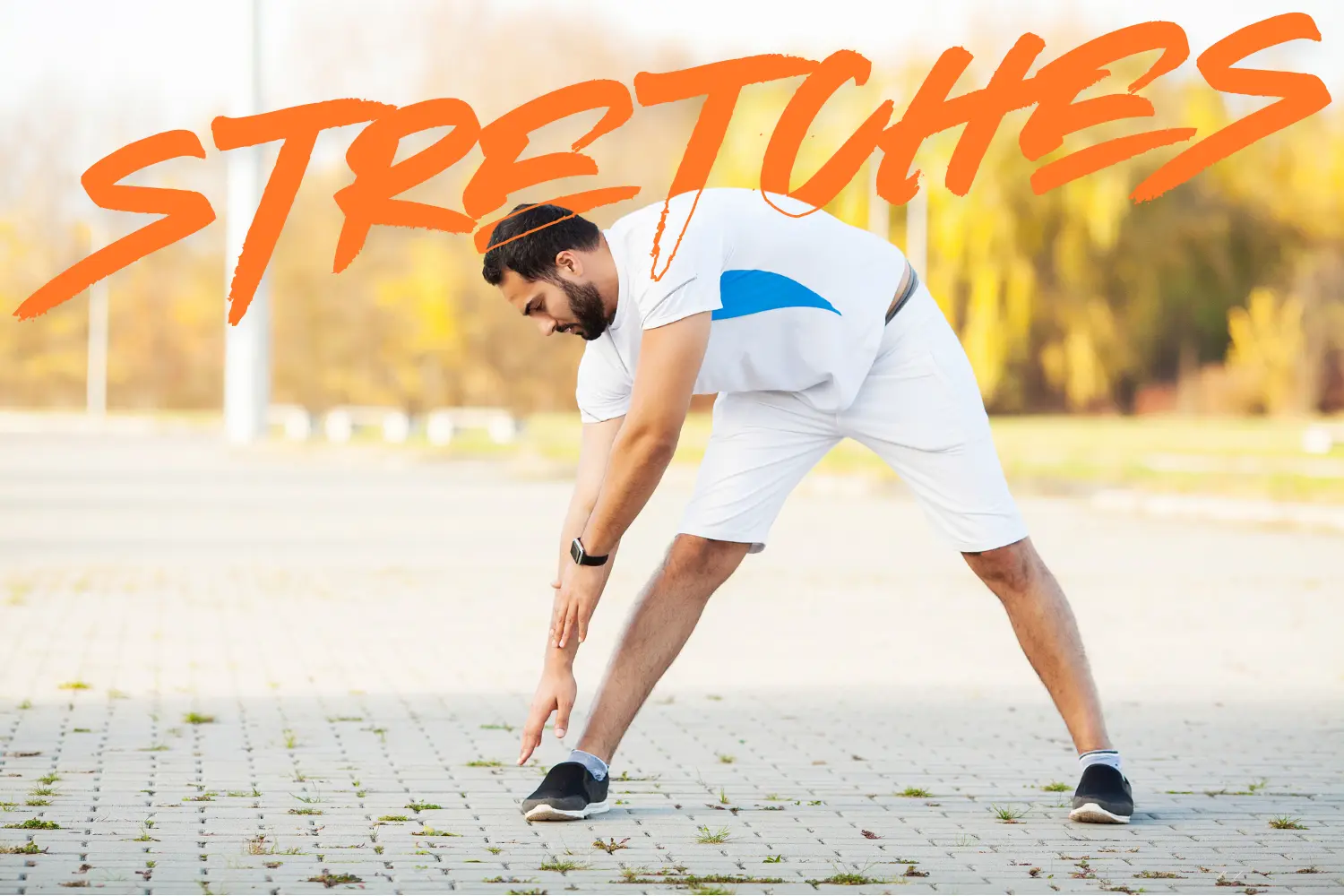Stretches for Beginners: Top 10 Stretches for Beginners
Are you new to stretching and looking to improve your flexibility? Whether you’re trying to enhance your range of motion or simply want to add some relaxation to your daily routine, this beginner-friendly guide will help you get started with the right stretches. We’ll cover various stretches, explain how to perform them correctly, and offer tips on progressing as you become more flexible.
Why is Stretching Important?
Stretching isn’t just about touching your toes. Regular stretching helps:
- Improve Flexibility: It enhances your range of motion, making everyday activities easier.
- Prevent Injuries: Keeps muscles supple and reduces the risk of strains.
- Reduce Muscle Tension: Alleviates stress and promotes relaxation.
- Boost Circulation: Improves blood flow, aiding in muscle recovery.
Static vs. Dynamic Stretches
Before we dive into the exercises, it’s essential to understand the difference between static and dynamic stretches:
- Static Stretches: These involve holding a stretch for a specific period (usually 15-60 seconds). They’re ideal for cooling down after a workout.
- Dynamic Stretches: These involve controlled movements that prepare your muscles and joints for activity. Perfect for warming up.
For beginners, it’s beneficial to include a mix of both types to maximize flexibility and prevent injuries.
Top 10 Stretches for Beginners
1. Hamstring Stretch (Static)
- Target Area: Hamstrings (back of the thighs)
- How to Perform: Sit on the floor with one leg extended and the other bent. Reach towards your toes, keeping your back straight. Hold for 30 seconds, then switch legs.
- Benefits: Enhances flexibility in the hamstrings, reducing the risk of lower back pain.
2. Cat-Cow Stretch (Dynamic)
- Target Area: Spine, shoulders, neck
- How to Perform: Start on all fours, with hands under shoulders and knees under hips. Inhale as you arch your back (Cow Pose) and exhale as you round your back (Cat Pose). Repeat for 30 seconds.
- Benefits: Improves spine flexibility and relieves tension in the back and neck.
3. Chest Opener (Static)
- Target Area: Chest, shoulders
- How to Perform: Stand tall, clasp your hands behind your back, and lift your arms slightly. Hold for 30 seconds while taking deep breaths.
- Benefits: Opens up the chest, counteracting the effects of slouching.
4. Hip Flexor Stretch (Static)
- Target Area: Hip flexors, quads
- How to Perform: Kneel on one knee with the other foot in front, forming a 90-degree angle. Push your hips forward gently and hold for 30 seconds. Switch sides.
- Benefits: Eases tightness in the hips, improving posture and reducing lower back pain.
5. Shoulder Rolls (Dynamic)
- Target Area: Shoulders, upper back
- How to Perform: Stand or sit comfortably. Roll your shoulders forward in a circular motion for 15 seconds, then backward for 15 seconds.
- Benefits: Relieves tension in the shoulders and upper back, promoting relaxation.
6. Seated Forward Bend (Static)
- Target Area: Lower back, hamstrings
- How to Perform: Sit with your legs extended in front of you. Slowly reach towards your toes, keeping your spine elongated. Hold for 30 seconds.
- Benefits: Stretches the lower back and hamstrings, enhancing flexibility.
7. Arm Circles (Dynamic)
- Target Area: Shoulders, arms
- How to Perform: Stand with your arms extended out to the sides. Make small circles with your arms, gradually increasing the size. Perform for 30 seconds, then reverse the direction.
- Benefits: Warms up the shoulder joints, increasing mobility.
8. Standing Quadriceps Stretch (Static)
- Target Area: Quads (front of the thighs)
- How to Perform: Stand on one leg, and pull the opposite foot towards your buttocks. Hold your ankle with your hand, keeping your knees close together. Hold for 30 seconds, then switch sides.
- Benefits: Increases flexibility in the quads, essential for reducing knee pain.
9. Spinal Twist (Static)
- Target Area: Spine, hips, shoulders
- How to Perform: Sit on the floor with one leg extended and the other crossed over. Place the opposite elbow on the bent knee and gently twist your torso. Hold for 30 seconds, then switch sides.
- Benefits: Improves spinal flexibility and relieves tension in the lower back.
10. Calf Stretch (Static)
- Target Area: Calves (back of the lower legs)
- How to Perform: Stand facing a wall, place your hands on the wall, and step one foot back, keeping it straight. Push your heel towards the floor and hold for 30 seconds. Switch legs.
- Benefits: Enhances calf flexibility, reducing the risk of Achilles tendon injuries.
How to Incorporate Stretching into Your Routine
Consistency is key to improving flexibility. Here are some tips to make stretching a regular part of your routine:
- Warm-Up: Always perform dynamic stretches before your workout to prepare your muscles.
- Cool Down: Use static stretches post-workout to relax your muscles and enhance recovery.
- Daily Routine: Even on rest days, take 5-10 minutes to stretch, especially if you’re sitting for long periods.
Tips for Progression
As you become more comfortable with these stretches, you can progress by:
- Holding Stretches Longer: Gradually increase the hold time from 30 seconds to 60 seconds.
- Deepening the Stretch: Gently push yourself further into each stretch as your flexibility improves.
- Adding More Stretches: Incorporate additional stretches or variations to target different muscle groups.
Common Mistakes to Avoid
To get the most out of your stretching routine and avoid injury, keep these tips in mind:
- Avoid Bouncing: Bouncing while stretching can lead to muscle strains. Instead, move into the stretch slowly and hold it steadily.
- Listen to Your Body: Stretch to the point of mild discomfort, not pain. Overstretching can cause injuries.
- Breathe: Don’t hold your breath while stretching. Breathing deeply helps relax your muscles and improves the effectiveness of the stretch.
FAQs
Q: How often should I stretch as a beginner?
A: Aim to stretch at least 3-4 times a week, but even daily stretching can be beneficial.
Q: Is it normal to feel sore after stretching?
A: Slight soreness is normal, especially if you’re new to stretching. However, if you experience sharp pain, you may have overstretched.
Q: Can I stretch without warming up?
A: It’s best to warm up your muscles with some light activity before stretching to prevent injury.
Conclusion
Starting a stretching routine as a beginner can be both rewarding and enjoyable. By incorporating these stretches into your daily life, you’ll gradually improve your flexibility, reduce muscle tension, and enhance your overall well-being. Remember, consistency is key, so keep stretching and listen to your body as you progress.




